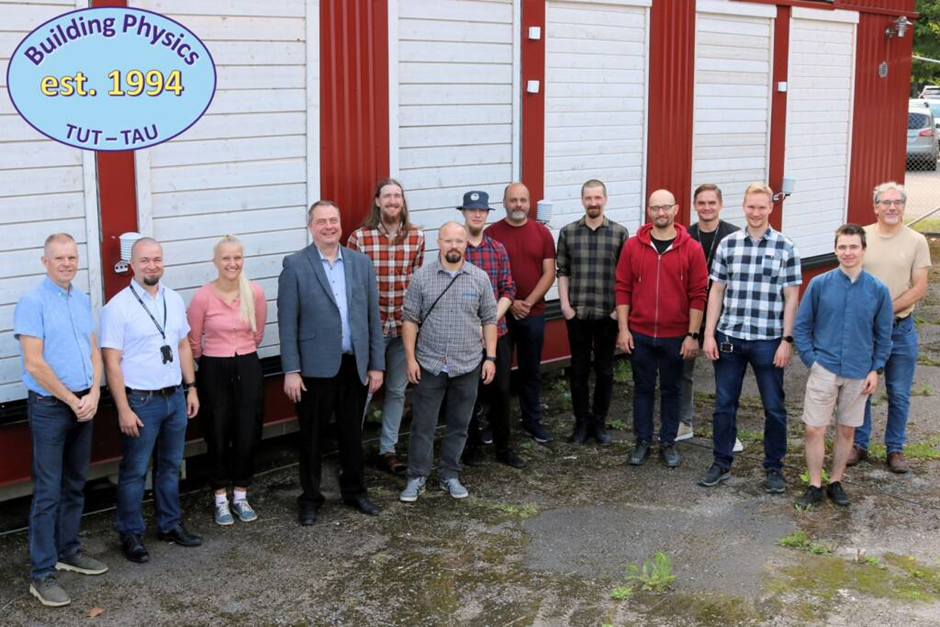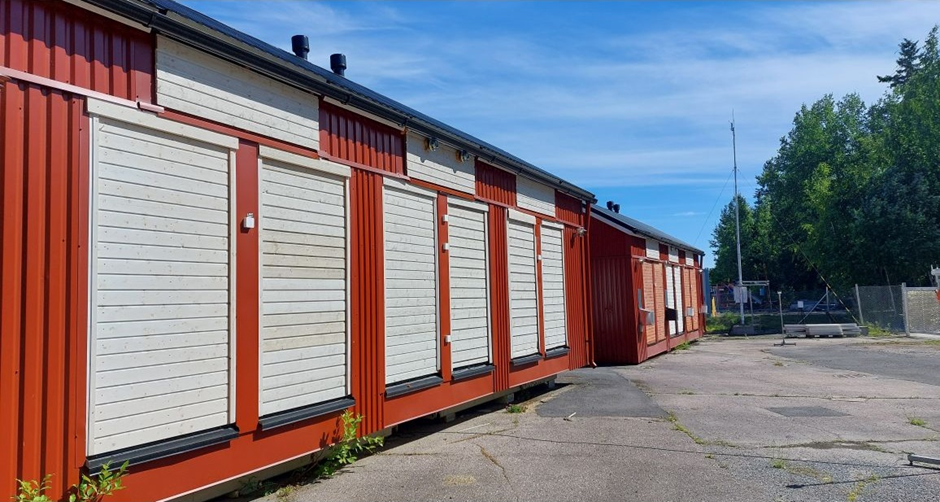The Building Physics Research Group, which started its activities in 1994, organised an open day for the staff of the Tampere Universities community in honour of its 30th anniversary. The event started with coffee and a lecture by the head of the research group, Professor Juha Vinha, on the history, current situation and prospects of the research group. After the lecture, the event continued with a visit to the research group’s facilities at the Construction Hall and the test building area, touring in small groups and getting to know the research methods and equipment applied in the different research areas of building physics. The challenges and drivers of building physics research include moisture and mould problems, climate change, energy efficiency and low-carbon construction, the research of which culminates in heat, moisture, air and energy.
The research methods of building physics are divided into computational modelling, laboratory tests of materials and structures, and field tests of experimental buildings and real construction sites. Thus, building physics analyses are carried out in different review resolutions, from computational modelling to actual buildings. Experimental studies are carried out from determining the building physical properties of materials to their application in experimental structures, which in turn can be studied in controlled laboratory conditions as well as in real outdoor conditions in the test building area and finally as studies in real buildings. In building surveys, buildings are often examined as a whole, which means that the studies can cover not only structures, but also ventilation and the indoor air conditions and quality measured and experienced by the building’s users.

The research infrastructure applied in the different research areas of building physics was presented at seven stands. Materials research was presented in terms of research volume at the exhibition of natural materials, which has been on the rise in recent years, and at the presentation point of materials research equipment in the materials laboratory. The air permeability equipment developed by the research group, which has been applied to determine the air permeability of blown insulation, also had its own stand. Laboratory tests of the structures were presented using the measuring equipment of the exterior walls and the measuring equipment of the upper floors in their own research facilities at the Construction Hall. Both research equipment have been developed by the research group itself and are unique in Finland. In addition to these, the guests got acquainted with the test buildings and the measuring equipment used in the study of the buildings.

